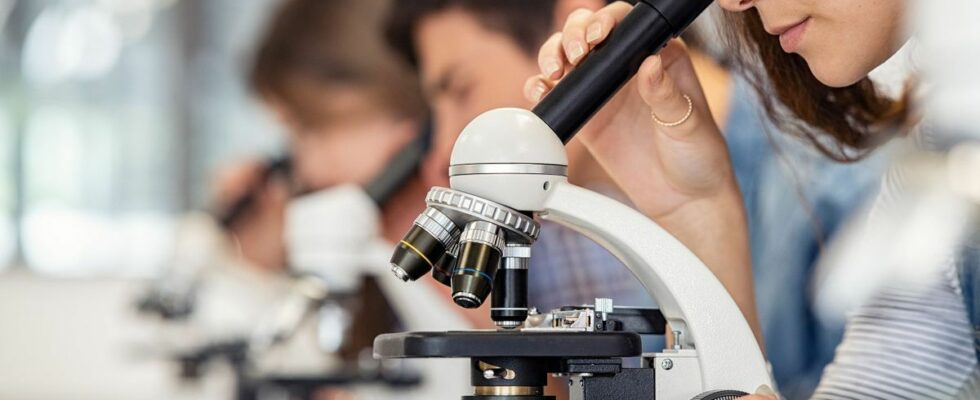Published on
Updated
Reading 1 min.
The drop in the number of young girls taking science subjects since the baccalaureate reform in 2019 is “a major and persistent problem”, warned on Tuesday a collective of associations of teachers and researchers, which published a note on the subject.
“The slight improvements observed over the past two years in the number of students in science courses remain negligible compared to the ruptures caused by the 2019 high school reform.“, with a “unprecedented worsening of gender-related inequalities“, deplores in this note the Maths and Sciences collective, which brings together associations of teachers and researchers and the promotion of women in science.
The high school reform in 2019 – which put an end to the traditional L, ES and S series – initially removed mathematics from the subjects taught to all high school students (the common core) to make it a specialty education, left to free choice students.
But given the warnings launched by the scientific community for two years about the drop in the number of young people taking this subject, particularly among girls, maths was reintroduced into the common core as a first option at the start of the 2022 school year, then as an option. mandatory this year.
Those who did not take the mathematics specialty in first grade thus have an hour and a half more lessons per week devoted to this discipline.
The Maths and Sciences collective notes that “Since 2021, we have observed a slight increase in numbers“scientists in final year, even before this reintroduction of math in first grade. But these numbers”however, remain lower in 2023 than those of 2020, the first year after the reform“.
In total, between 2019 and 2023, with the reform, “general final year scientific numbers have fallen by more than 20%, with a loss of scientific versatility (the fact of following several scientific disciplines, Editor’s note) which affects all students“, underlines the note.
“This drop is greater for girls, regardless of the number of hours of maths studied. As a result, the share of girls fell in all science courses, going from 47.5% to 38% for science students taking at least six hours of maths.“, she adds.
For this collective, “lThe problems highlighted during the implementation of the reform” have not been “resolved”.
